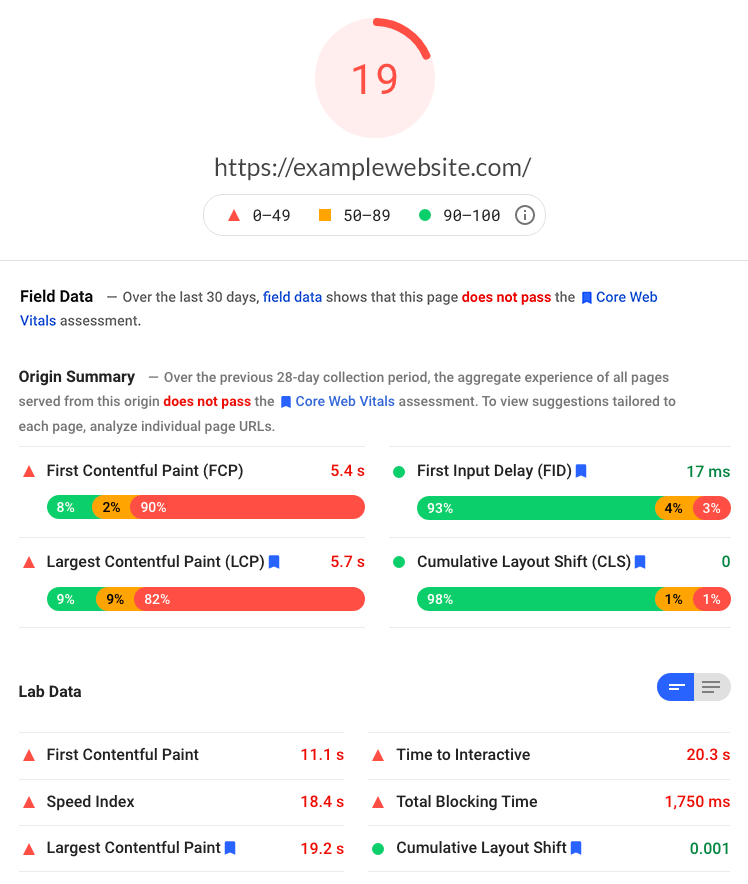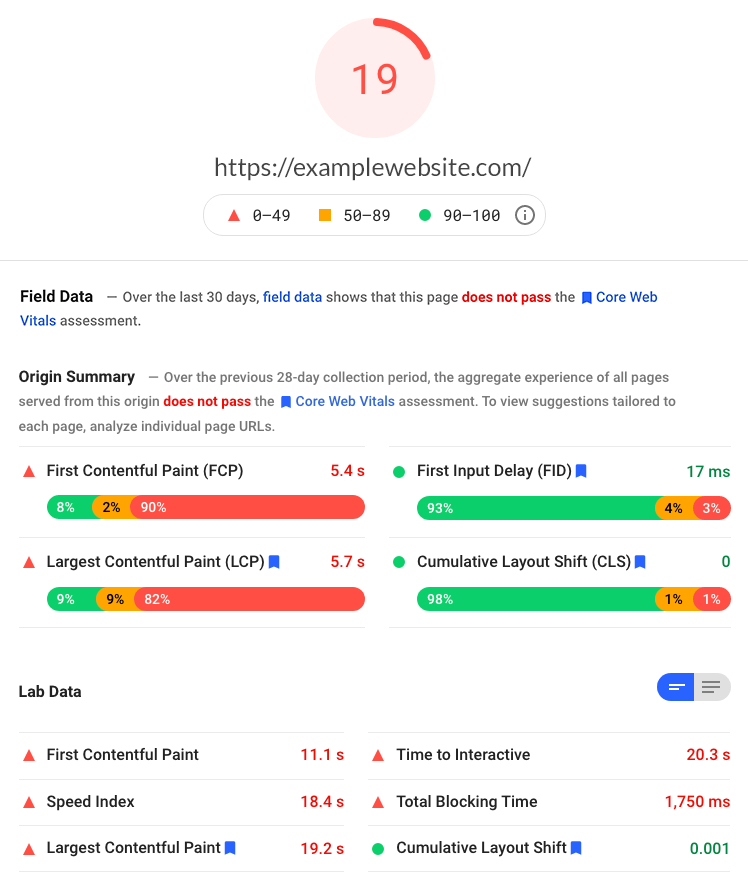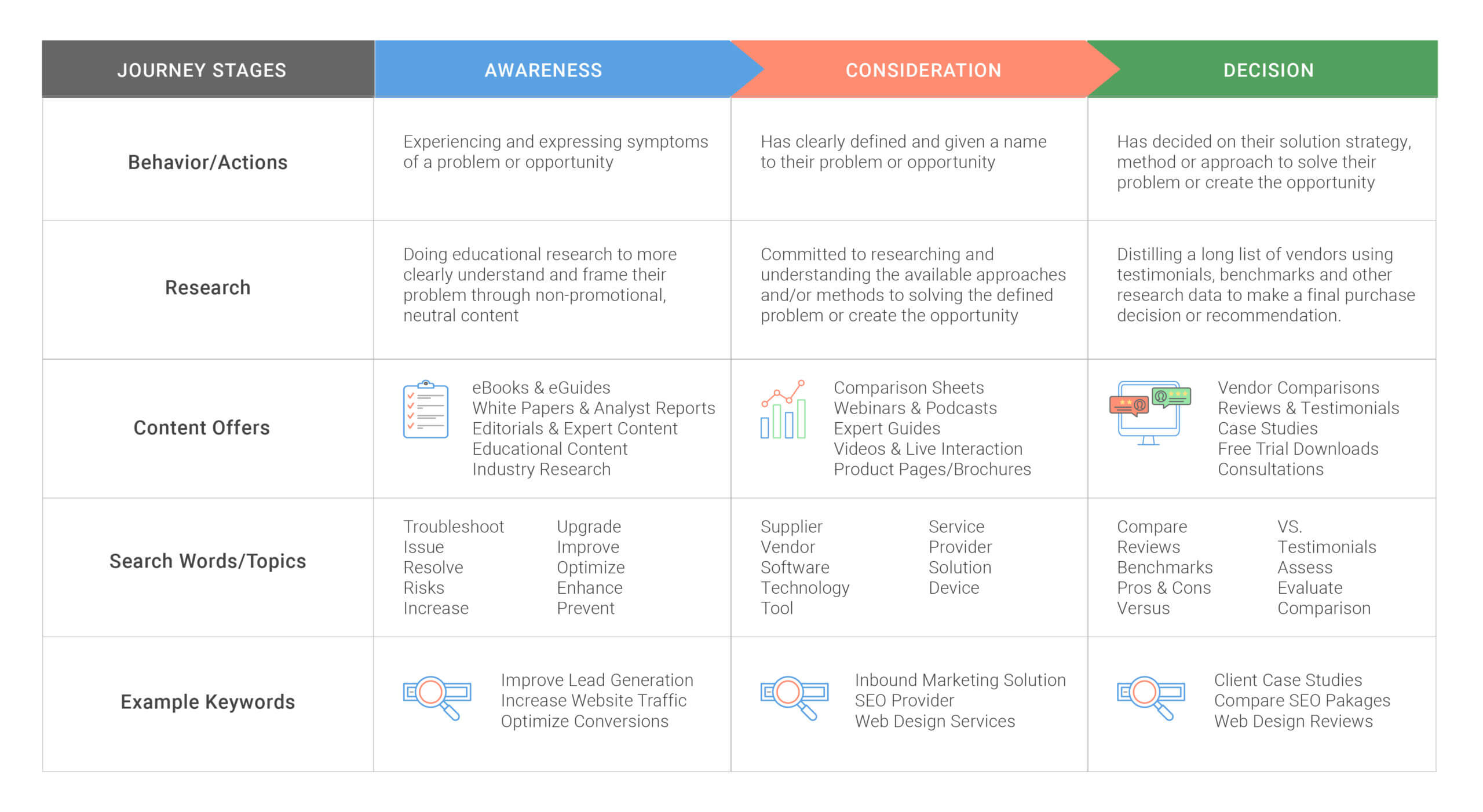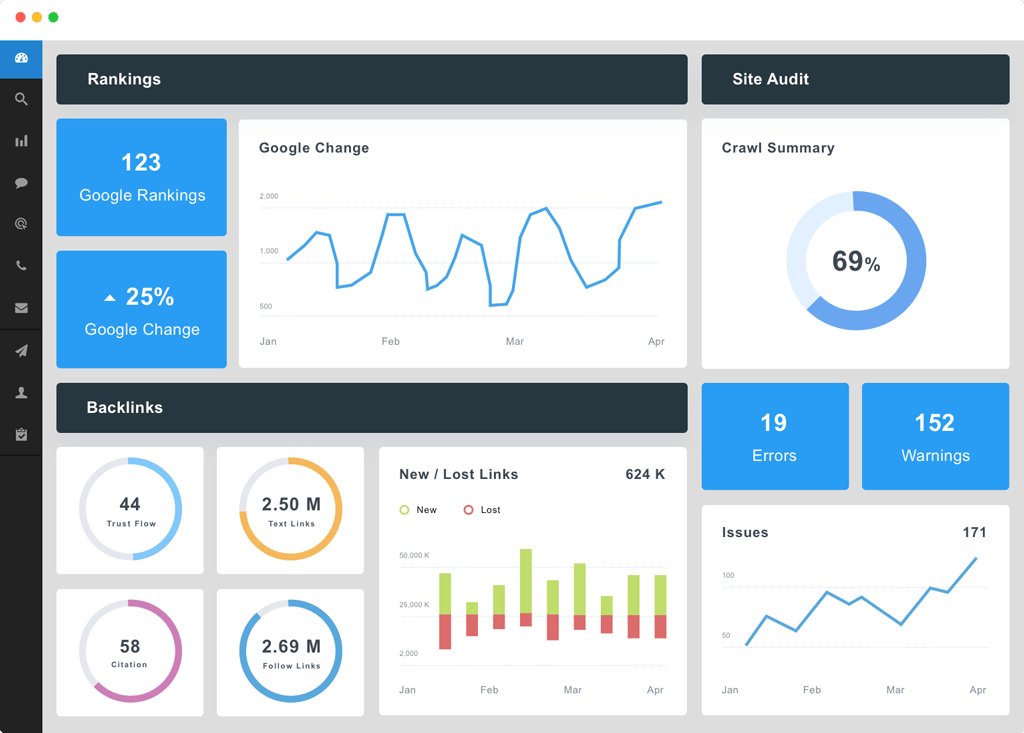Strategically Aligning
with Google's Goal
Why Traditional SEO Methods Are Becoming Less Effective
The Challenge
There was a time when it paid to invest in tactics designed to game the system and fool Google’s Algorithm. But SEO has changed considerably over the past few years. Keyword stuffing, bulk link buying, and other outdated tactics aren’t as effective as they used to be, and the days of looking for SEO loopholes are ending. Today’s algorithms understand context, interpret user intent, and use machine learning to determine the quality of a website’s content. SEO is no longer about who spends the most money. It’s about creating valuable content, understanding buyer behavior, and adapting to ever-changing buying patterns.
Our Solution
Although it varies from business to business, most buyers go on a journey when they make a purchase, and it usually involves a search engine. This journey is complex, non-linear, and occurs across multiple touchpoints. Consequently, modern SEO must consider different buying stages (awareness, consideration, and decision) and the many paths-to-purchase to be effective. With this in mind, Dymic’s approach incorporates buyer personas and overlays the SEO strategy with customer journey maps. This process maximizes ranking potential by identifying content most relevant to the buyer’s journey while also strategically aligning with Google’s search goal (to provide users with the best possible search results).
Strategically Aligning with Google's Goal
Why Traditional SEO Methods Are Becoming Less Effective
The Challenge
There was a time when it paid to invest in tactics designed to game the system and fool Google’s Algorithm. But SEO has changed considerably over the past few years. Keyword stuffing, bulk link buying, and other outdated tactics aren’t as effective as they used to be, and the days of looking for SEO loopholes are ending. Today’s algorithms understand context, interpret user intent, and use machine learning to determine the quality of a website’s content. SEO is no longer about who spends the most money. It’s about creating valuable content, understanding buyer behavior, and adapting to ever-changing buying patterns.
Our Solution
Although it varies from business to business, most buyers go on a journey when they make a purchase, and it usually involves a search engine. This journey is complex, non-linear, and occurs across multiple touchpoints. Consequently, modern SEO must consider different buying stages (awareness, consideration, and decision) and the many paths-to-purchase to be effective. With this in mind, Dymic’s approach incorporates buyer personas and overlays the SEO strategy with customer journey maps. This process maximizes ranking potential by identifying content most relevant to the buyer’s journey while also strategically aligning with Google’s search goal (to provide users with the best possible search results).
SEO IS A MEANS TO AN END
Rankings, Traffic & Conversions,
but what about ROI?
In a world where business leaders need to decide between hiring a salesperson or investing in digital marketing channels, the options can be overwhelming. Without a fair amount of knowledge on the subject, it is hard, if not impossible, to ask the right questions. For example: What’s the value of keyword rankings without clicks? What’s organic traffic worth if it doesn’t convert? What good are conversions if leads don’t turn into sales? What is the new priority on SEO? Watch the video to learn more:

SEO IS A MEANS TO AN END
Rankings, Traffic
& Conversions, but what about ROI?
In a world where business leaders need to decide between hiring a salesperson or investing in digital marketing channels, the options can be overwhelming. Without a fair amount of knowledge on the subject, it is hard, if not impossible, to ask the right questions. For example: What’s the value of keyword rankings without clicks? What’s organic traffic worth if it doesn’t convert? What good are conversions if leads don’t turn into sales? What is the new priority on SEO? Watch the video to learn more:

TRACKING, ANALYTICS & REPORTING
Measuring the ROI of SEO
One of the most important questions for any business leader looking to invest in SEO is “How do I measure and calculate ROI?” The answer depends on the business’s goals and objectives. Of course, revenue is the ultimate goal, but SEO is multifaceted and can deliver value across the organization. Here are some of the common KPIs and the different types of ROI that can and should be measured:
ANALYTICS & REPORTING
Measuring the
ROI of SEO
One of the most important questions for any business leader looking to invest in SEO is “How do I measure and calculate ROI?” The answer depends on the business’s goals and objectives. Of course, revenue is the ultimate goal, but SEO is multifaceted and can deliver value across the organization. Here are some of the common KPIs and the different types of ROI that can and should be measured:

The Evolution Continues
Google's New SEO
Ranking Factors
Page speed has been a ranking factor for a long time. But Google is raising the stakes again in their new Core Algorithm Update. Businesses that don’t meet the minimum criteria are going to have an even tougher time ranking and getting traffic. These changes, known as Core Web Vitals, are a list of metrics created to measure page experience beyond informational value. They measure real-world user experience for loading performance, interactivity, and visual stability of a web page.
What makes this ranking factor difficult is many of the changes necessary to receiving a good score will require changing the CMS code, e.g. javascript, CSS, HTML, third party services, plugins, etc. Improving site speed involves a review of the website’s current state, and then implementing technical—web development and other site speed best practices. Click below to learn about Core Web Vitals, test your website (to see if it passes), and find out how Dymic’s website optimization service can help.
Google’s new “User Experience Update” is here
and only 4% of websites were prepared

The Evolution Continues
Google's New SEO Ranking Factors
Page speed has been a ranking factor for a long time. But Google is raising the stakes again in their new Core Algorithm Update. Businesses that don’t meet the minimum criteria are going to have an even tougher time ranking and getting traffic. These changes, known as Core Web Vitals, are a list of metrics created to measure page experience beyond informational value. They measure real-world user experience for loading performance, interactivity, and visual stability of a web page.
What makes this ranking factor difficult is many of the changes necessary to receiving a good score will require changing the CMS code, e.g. javascript, CSS, HTML, third party services, plugins, etc. Improving site speed involves a review of the website’s current state, and then implementing technical—web development and other site speed best practices. Click below to learn about Core Web Vitals, test your website (to see if it passes), and find out how Dymic’s website optimization service can help.
Google’s new “User Experience Update” is here
and only 4% of websites were prepared
More on Google's
Ranking Factors
WHAT REALLY MATTERS?
For every search, Google sorts through an estimated 60 trillion web pages to deliver the most relevant, useful results for their users. But before the search, Google organizes this information in what is known as the search index. Once a website is indexed, the search engine uses an algorithm with ranking factors to prioritize results. SEO is the practice of optimizing for those factors. Although Google uses hundreds of signals to determine rankings, only a handful are critical to SEO success. With this in mind, Dymic SEO Strategists perform a specialized SEO audit explicitly designed to evaluate factors that matter. Once the SEO baseline is established, a brand-specific optimization strategy is built to deliver the highest page rankings, in the least amount of time, for the lowest possible cost.
More on Google's
Ranking Factors
WHAT REALLY MATTERS?
For every search, Google sorts through an estimated 60 trillion web pages to deliver the most relevant, useful results for their users. But before the search, Google organizes this information in what is known as the search index. Once a website is indexed, the search engine uses an algorithm with ranking factors to prioritize results. SEO is the practice of optimizing for those factors.
Although Google uses hundreds of signals to determine rankings, only a handful are critical to SEO success. With this in mind, Dymic performs a specialized SEO audit explicitly designed to evaluate factors that matter. Once the SEO baseline is established, a brand-specific optimization strategy is built to deliver the highest page rankings, in the least amount of time, for the lowest possible cost.
Top Ranking Factors
Google doesn’t provide a breakdown of the exact ranking factors or how they prioritize those signals. But their updates clearly point to expertise, authority, relevance, and user experience as the most significant ranking factors.
- Search Intent Alignment
- Content Quality
- Loading (LCP) 2021
- Interactivity (FIP) 2021
- Visual Stability (CLS) 2021
- Mobile Friendliness
- Safe Browsing
- HTTPS
On-Page SEO
On-page SEO is optimizing page content, source code, and site architecture for search algorithms and searchers. It is important because it informs Google about the website, the brand, and how its products and services provide value to visitors.
- Content
- Mobile Responsiveness
- Site Speed
- Page Titles & Headers
- Image Alt-text
- Page URL's
- Structured Markup
- Internal Linking
Off-Page SEO
Off-page SEO is the promotional actions taken outside a website that impact search rankings. Optimizing for off-site involves improving the search engine and the user’s perception of a site’s popularity, relevance, trustworthiness, and authority.
- Backlinks
- Google My Business
- Reviews
- Guest Blogging
- Linked Brand Mentions
- Social Media Marketing
- Social Signals
- NAP Citations
Top Ranking Factors
Google doesn’t provide a breakdown of the exact ranking factors or how they prioritize those signals. But their updates clearly point to expertise, authority, relevance, and user experience as the most significant ranking factors.
- Search Intent Alignment
- Content Quality
- Loading (LCP) 2021
- Interactivity (FIP) 2021
- Visual Stability (CLS) 2021
- Mobile Friendliness
- Safe Browsing
- HTTPS
On-Page SEO
On-page SEO is optimizing page content, source code, and site architecture for search algorithms and searchers. It is important because it informs Google about the website, the brand, and how its products and services provide value to visitors.
- Content
- Mobile Responsiveness
- Site Speed
- Page Titles & Headers
- Image Alt-text
- Page URL's
- Structured Markup
- Internal Linking
Off-Page SEO
Off-page SEO is the promotional actions taken outside a website that impact search rankings. Optimizing for off-site involves improving the search engine and the user’s perception of a site’s popularity, relevance, trustworthiness, and authority.
- Backlinks
- Google My Business
- Reviews
- Guest Blogging
- Linked Brand Mentions
- Social Media Marketing
- Social Signals
- NAP Citations
THE FUTURE OF SEO
Blending SEO & Content Strategy
Not long ago, the search world argued whether to optimize for people or for search engines. Some experts said you had to optimize for search engines first; otherwise, people wouldn’t be able to find you. But when the Google Panda algorithm update was released in 2011 (rewarding high-quality websites and diminishing the presence of low-quality websites), those who served the algorithm at the customer’s expense were put on notice. Ten years later, SEO Strategy and Content Strategy have finally converged, and Dymic is using content marketing to boost SEO metrics and vice versa. The chart below explains how we combine SEO & Content Strategy to optimize for the buyer’s journey, increase site traffic, and improve conversions.
THE FUTURE OF SEO
Blending SEO & Content Strategy
Not long ago, the search world argued whether to optimize for people or for search engines. Some experts said you had to optimize for search engines first; otherwise, people wouldn’t be able to find you. But when the Google Panda algorithm update was released in 2011 (rewarding high-quality websites and diminishing the presence of low-quality websites), those who served the algorithm at the customer’s expense were put on notice. Ten years later, SEO and Content Strategy have finally converged, and Dymic is using content marketing to boost SEO metrics and vice versa.
The chart below explains how we combine SEO & Content Strategy to optimize for the buyer’s journey, increase site traffic, and improve conversions.
Tap image to enlarge
ESSENTIAL SEO INSIGHTS
Buyer Personas
Knowing the Audience
Identifying the target audience is the most important step in any marketing strategy and buyer personas are the tool marketing professionals use to profile that audience. It is an effort to understand the potential buyer’s goals, needs, and business objectives, as well as their roles, responsibilities, common objections, and other differentiating factors. This process is often overlooked when it comes to SEO strategy, but it is essential to productive keyword research and determining which queries are most relevant to the journey. Once these personas are created, it is possible to identify how well the content fits, map it to the appropriate stage, and utilize insights to build a more effective SEO strategy.
82% of companies using buyer personas
have an improved value proposition
ESSENTIAL SEO INSIGHTS
Buyer Personas
Knowing the Audience
Identifying the target audience is the most important step in any marketing strategy and buyer personas are the tool marketing professionals use to profile that audience. It is an effort to understand the potential buyer’s goals, needs, and business objectives, as well as their roles, responsibilities, common objections, and other differentiating factors. This process is often overlooked when it comes to SEO strategy, but it is essential to productive keyword research and determining which queries are most relevant to the journey. Once these personas are created, it is possible to identify how well the content fits, map it to the appropriate stage, and utilize insights to build a more effective SEO strategy.
82% of companies using buyer personas have an improved value proposition
THE BUYERS JOURNEY
Content Mapping
Getting In The Buyer’s Shoes
Since SEO is about helping buyers find an organization’s content, aligning SEO strategy with the buyer’s journey makes sense and should start by mapping the content. To do this, Dymic maps each piece of content to the corresponding stage and buyer persona. Because the exercise is designed to align the journey with SEO, Dymic extends this process across the entire website, including product and service pages, blog articles, and any other web content produced for the buyer. Once the brand’s content is mapped to the appropriate stages, further analysis is conducted to identify and create missing content to better support the buyer’s decision-making process.
76% of marketers use organic traffic
as a measure of content success
THE BUYERS JOURNEY
Content Mapping
Getting In The Buyer’s Shoes
Since SEO is about helping buyers find an organization’s content, aligning SEO strategy with the buyer’s journey makes sense and should start by mapping the content. To do this, Dymic maps each piece of content to the corresponding stage and buyer persona. Because the exercise is designed to align the journey with SEO, Dymic extends this process across the entire website, including product and service pages, blog articles, and any other web content produced for the buyer. Once the brand’s content is mapped to the appropriate stages, further analysis is conducted to identify and create missing content to better support the buyer’s decision-making process.
76% of marketers use organic traffic
as a measure of content success
SEARCH INTENT IS KEY
More Effective
Keyword Research
Widen the Funnel to Capture More Leads
Typically, keyword research involves looking for keywords with the highest search volume and the lowest competition. But it isn’t just about search volume and traffic. It’s about choosing query categories and topics that mirror a buyer’s search requirements. Understanding the searcher’s objective—known as search intent—is one of the most important concepts in SEO today. For this reason, Dymic’s SEO strategy goes beyond transactional or decision-stage keywords (which have lower search demand) and includes informational queries (for the awareness and consideration stages) to widen the funnel. This enables the brand to join the conversation earlier in the journey, helps build trust and authority, and provides an opportunity to guide buyers toward their products and services.
69.7% of search queries contain four words or more, and
those searches have 3-5% higher click-through rates
SEARCH INTENT IS KEY
More Effective
Keyword Research
Widen the Funnel to Capture More Leads
Typically, keyword research involves looking for keywords with the highest search volume and the lowest competition. But it isn’t just about search volume and traffic. It’s about choosing query categories and topics that mirror a buyer’s search requirements. Understanding the searcher’s objective—known as search intent—is one of the most important concepts in SEO today.
For this reason, Dymic’s SEO strategy goes beyond transactional or decision-stage keywords (which have lower search demand) and includes informational queries (for the awareness and consideration stages) to widen the funnel. This enables the brand to join the conversation earlier in the journey, helps build trust and authority, and provides an opportunity to guide buyers toward their products and services.
69.7% of search queries contain four words
or more, and those searches have 3-5%
higher click-through rates
TRACKING PERFORMANCE
The Dymic Dashboard
We all know SEO is not immediate. It can take time to see results. But with Dymic’s Analytics Dashboard, clients get comprehensive SEO reporting to track and measure incremental gains in visibility, conversions, and other key metrics. This reporting tool integrates with Google Analytics to show Dymic clients exactly how their SEO campaign impacts their bottom line. The dashboard can be used on any device so clients can see the value of their marketing investment anytime, anywhere.
TRACKING PERFORMANCE
Dymic Dashboard
We all know SEO is not immediate. It can take time to see results. But with Dymic’s Analytics Dashboard, clients get comprehensive SEO reporting to track and measure incremental gains in visibility, conversions, and other key metrics. This reporting tool integrates with Google Analytics to show Dymic clients exactly how their SEO campaign impacts their bottom line. The dashboard can be used on any device so clients can see the value of their marketing investment anytime, anywhere.




